Unquestionably one of the most fascinating and alluring birds in the world is the peacock. These animals have mesmerized people for generations thanks to their stunning plumage and captivating antics. But how many types of peacocks exist? We will go into the fascinating world of peacocks in this article, looking at the various kinds, their distinctive traits, and where you may find them.
How Many Types of Peacocks
I. The Indian Peafowl (Pavo cristatus)
Indian peacocks are a well-known species of peacocks, they are also known as Indian Peafowl. Indian peafowl are native to the sub-continent. Males have stunning tails with “eye” patterns and brilliant, iridescent blue and green feathers. The female, also referred to as a peahen, has a pretty decent appearance.
Many Indian peacocks are living in Sri Lanka, and Pakistan including India. They are symbols of beauty, grace, and elegance due to their remarkable appearance in many cultures.
Behavior: Indian Peafowls are well-known for their courtship displays. During the mating season, males fan out their beautiful tails, create loud calls, and try to gain the attention of females.
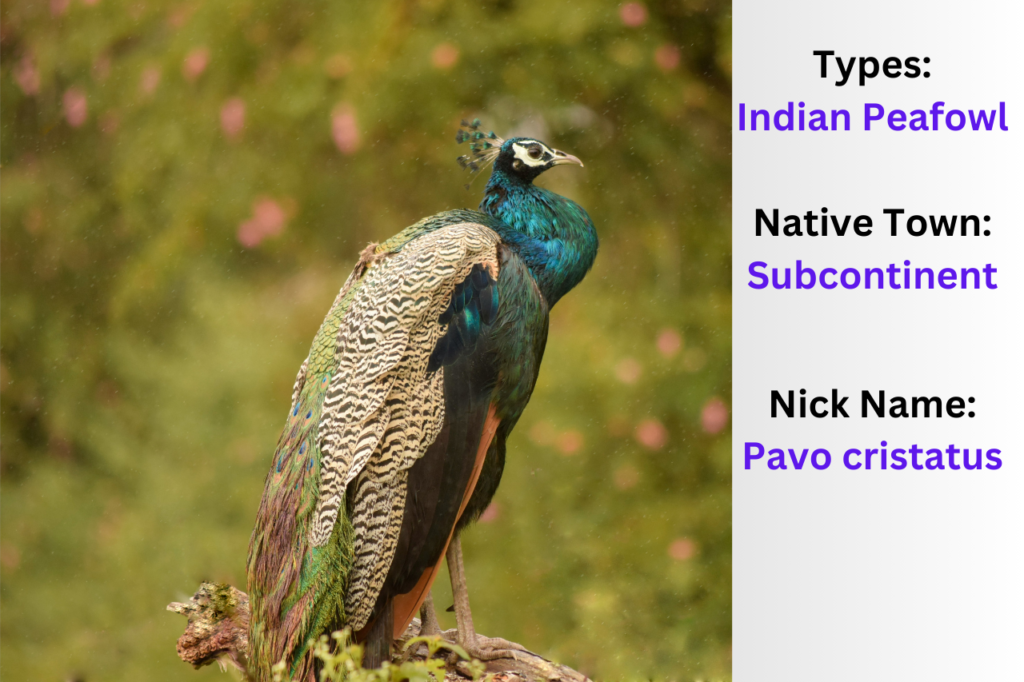
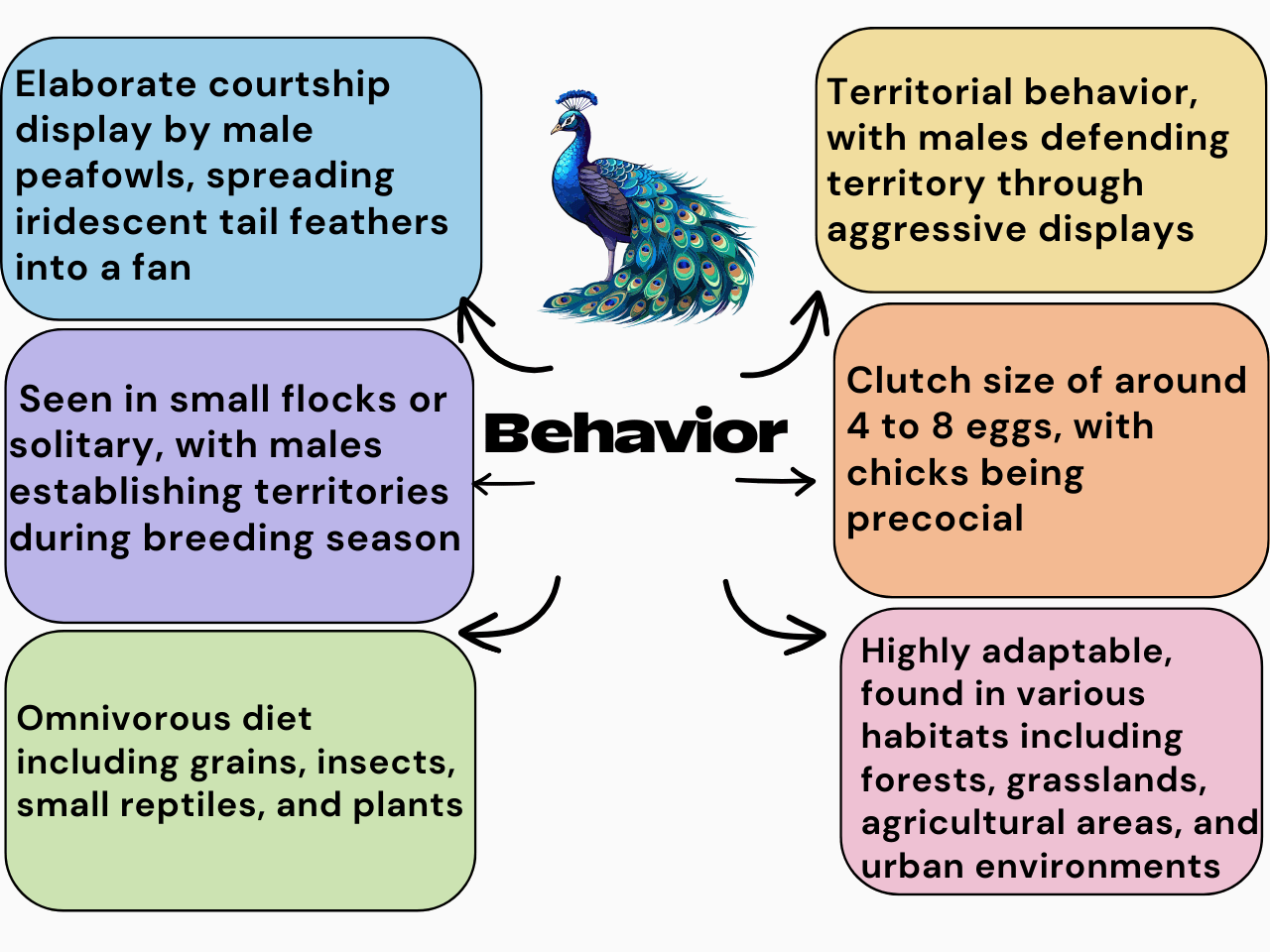
II. The Green Peafowl (Pavo muticus)
Green peafowl are native to Southeast Asia and also known as Burmese Peafowl. As the name suggests, their plumage is predominantly green, with a metallic sheen. The males with striking and beautiful metallic sheen and their plumage is predominantly Green as suggested by their name.
Green peafowl are likely found in Thailand, Indonesia, and Myanmar. Green peafowl are famous for their shy and elusive behavior and less seen in the wild.
Behavior: Green Peafowls are known for their quieter behavior compared to their Indian species fellows. Their courtship displays are less extreme but equally mesmerizing. Males emit low-pitched calls and perform a slow dance to attract females.
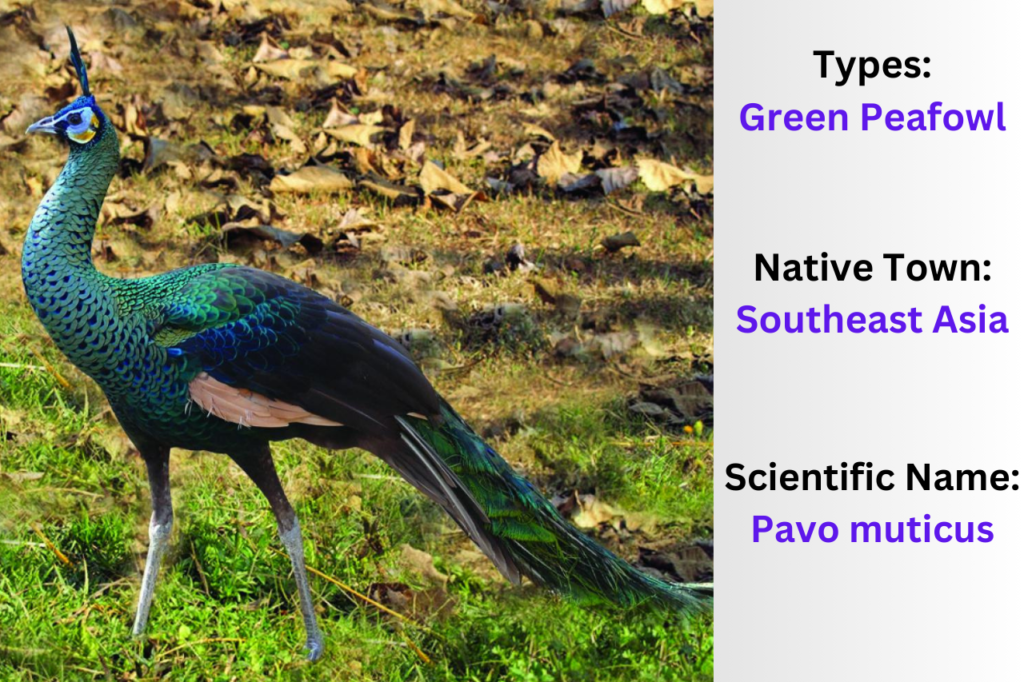
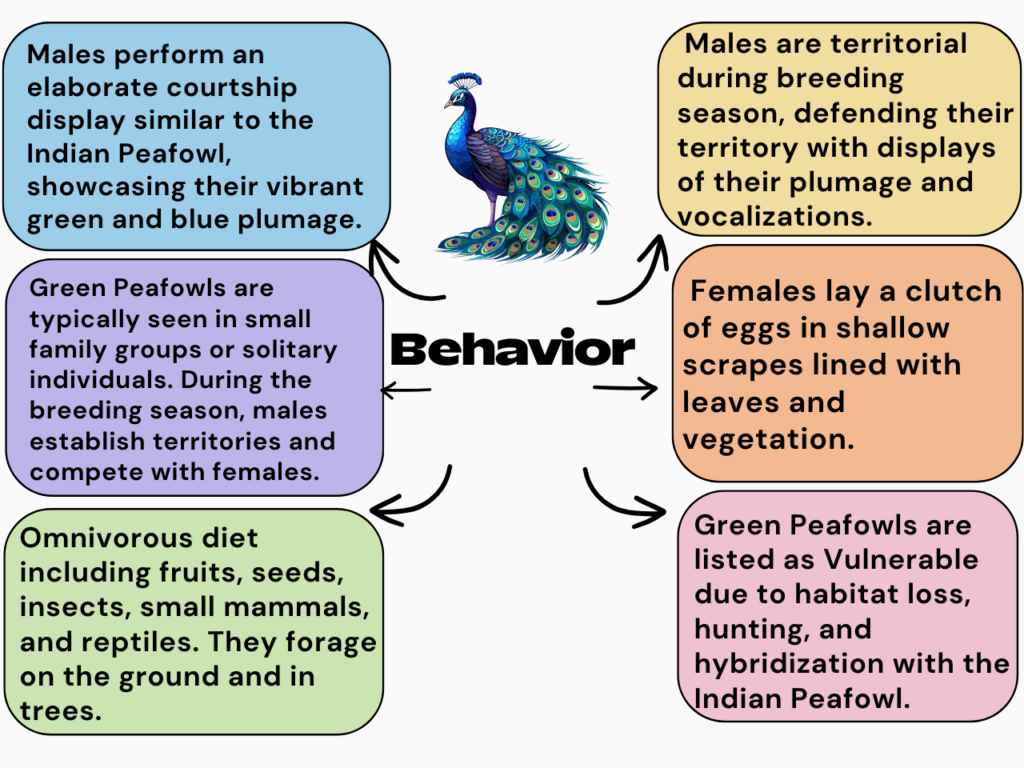
III. The Congo Peafowl (Afropavo congensis)
Appearance: Congo peafowl are a very uncommon species and they are native to the Congo Basin in Central Africa. Compared to their Green fellows and Indian fellows, these species are smaller and appear more subdued.
They have Dark metallic feathers that are distinguished by white dots. One of the most elusive species in the peacock family, they are renowned for their secrecy and are infrequently seen in the wild.
Behavior: Congo Peafowls are bashful compared to other peafowls and are seldom seen engaging in elaborate courtship displays. They rely more on vocalizations to communicate with one another.
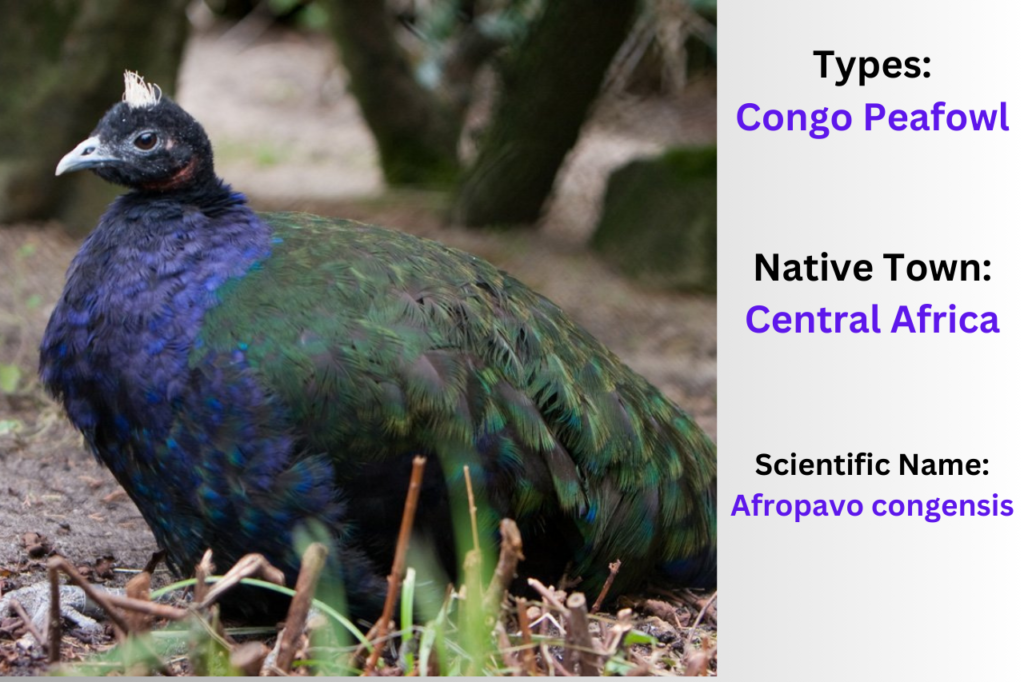
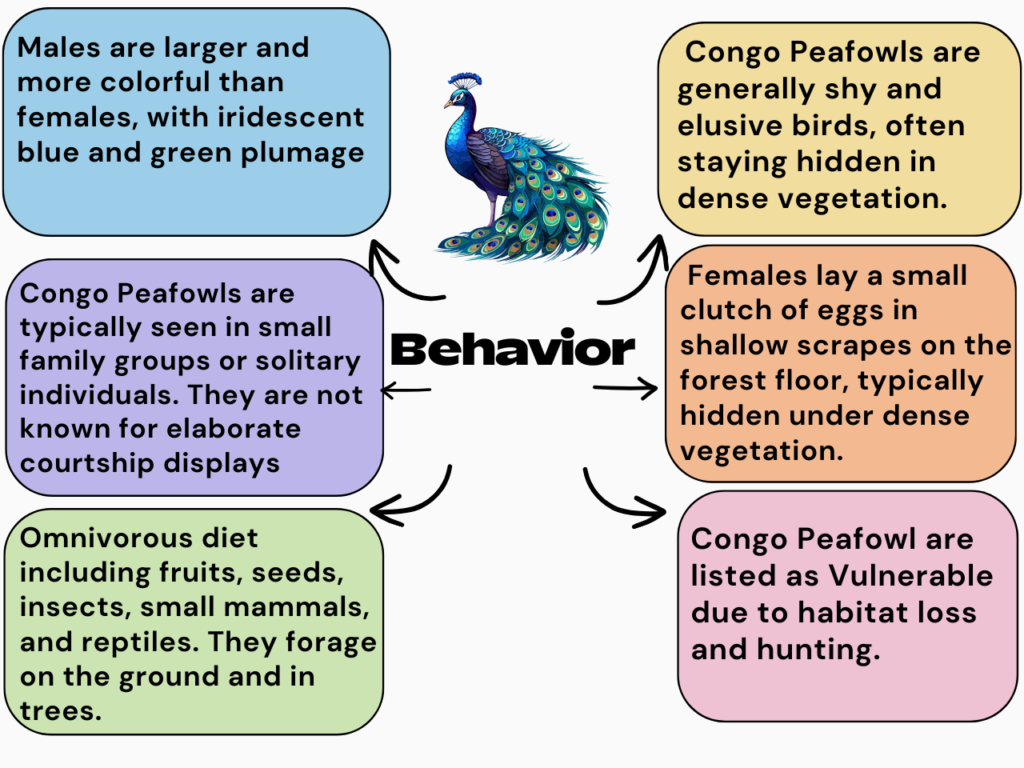
IV. The Javan Peafowl (Pavo javanensis)
The Javan Peafowl is commonly referred to as the Javan Green Peafowl. They are commonly found on the island of Java in Indonesia. They have distinctive, eye-catching green and bronze feathers. Males can be identified by their long feathers and elaborate wing designs.
Due to habitat degradation and poaching, the Javan Peafowl, one of the rarest peacock species in the world, is severely endangered.
Behavior: Similar to Indian Peafowls, Javan Peafowls engage in elaborate courtship displays during the breeding season. Males fan out their tails and make loud calls to attract mates.
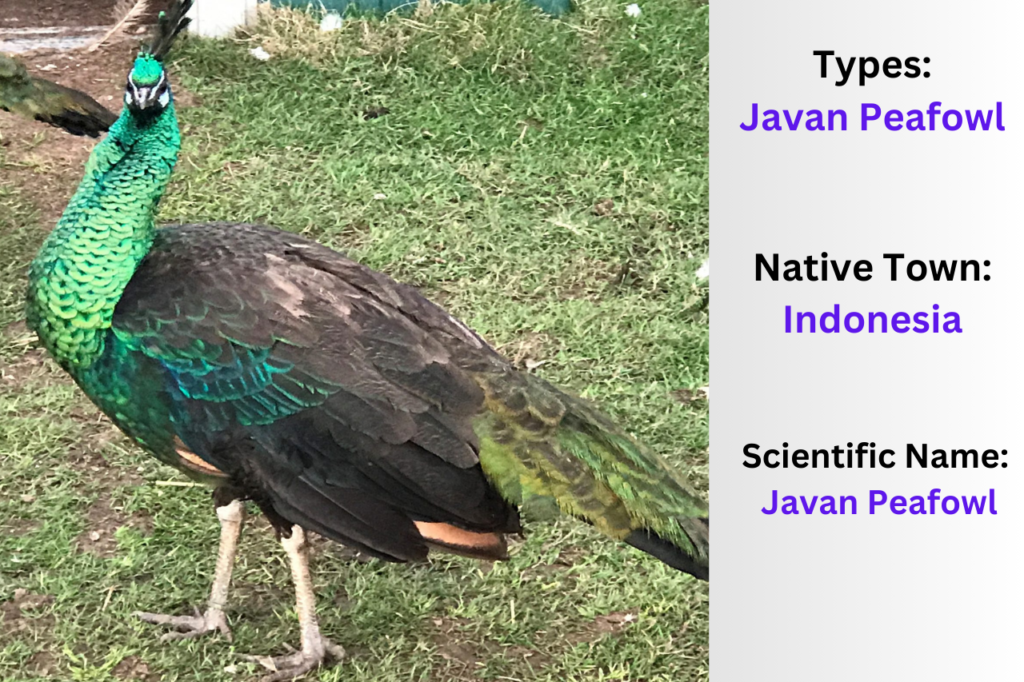

V. The Burmese Peafowl (Pavo imperator)
Another unique species found in Southeast Asia is the Burmese Peafowl, which is mostly found in Myanmar and its surroundings. Males are distinguished by their spectacular fan-shaped tails and cobalt-blue feathers that are speckled with white.
Due to habitat destruction, Burmese Peafowl populations are under danger, hence conservation efforts are essential.
Behavior: Burmese Peafowls exhibit courtship displays similar to their Indian and Javan relatives, with males displaying their stunning plumage and vocalizing to attract females.
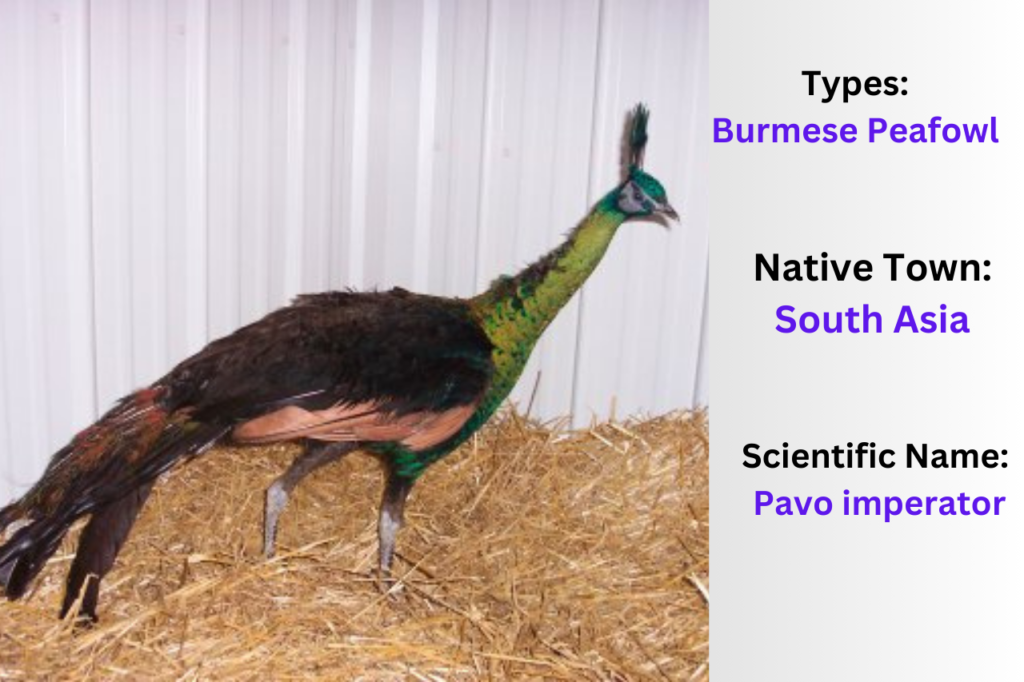
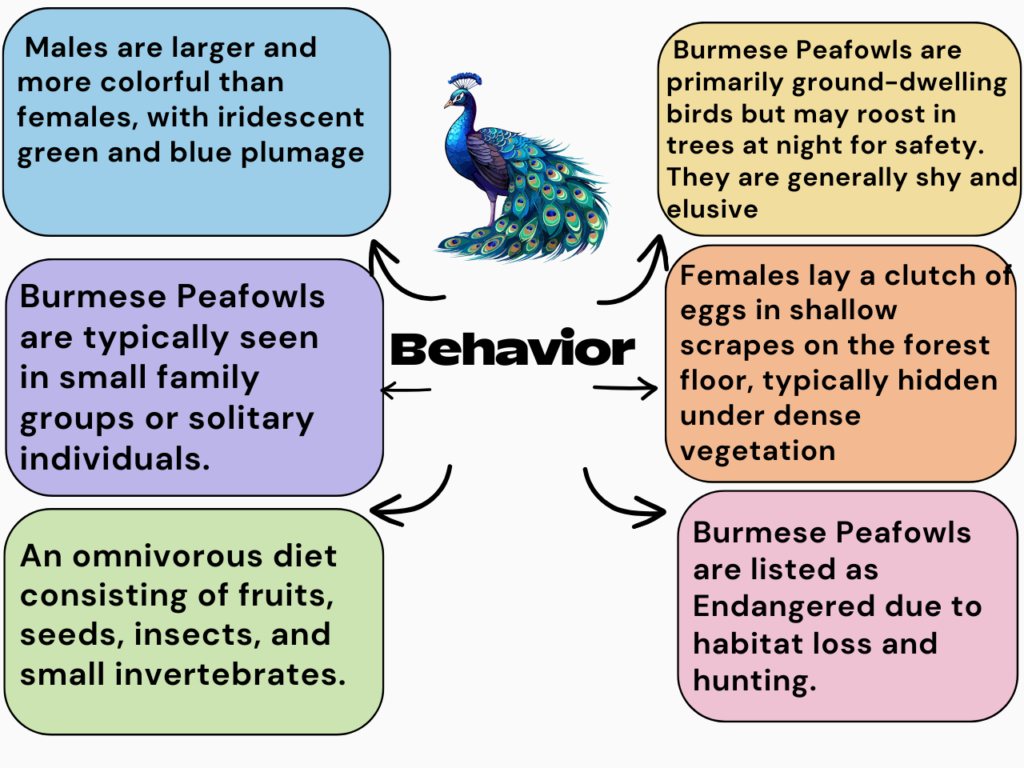
Sumatran Peafowl (Pavo imperator):
Another fascinating species of peacock is the Sumatran Peafowl, they are native to the Indonesian island of Sumatra. Although their patterns and colors are slightly different, they are closely related to the Javan Peafowl and are recognized for their characteristic green and golden feathers.
Due to habitat damage and illegal trade, Sumatran Peafowl populations are falling, making conservation measures essential to their protection.
Behavior:It is well known that Sumatran Peafowls are shy and solitary creatures. They tend to avoid people and are rarely seen in public places, which adds to their allure.

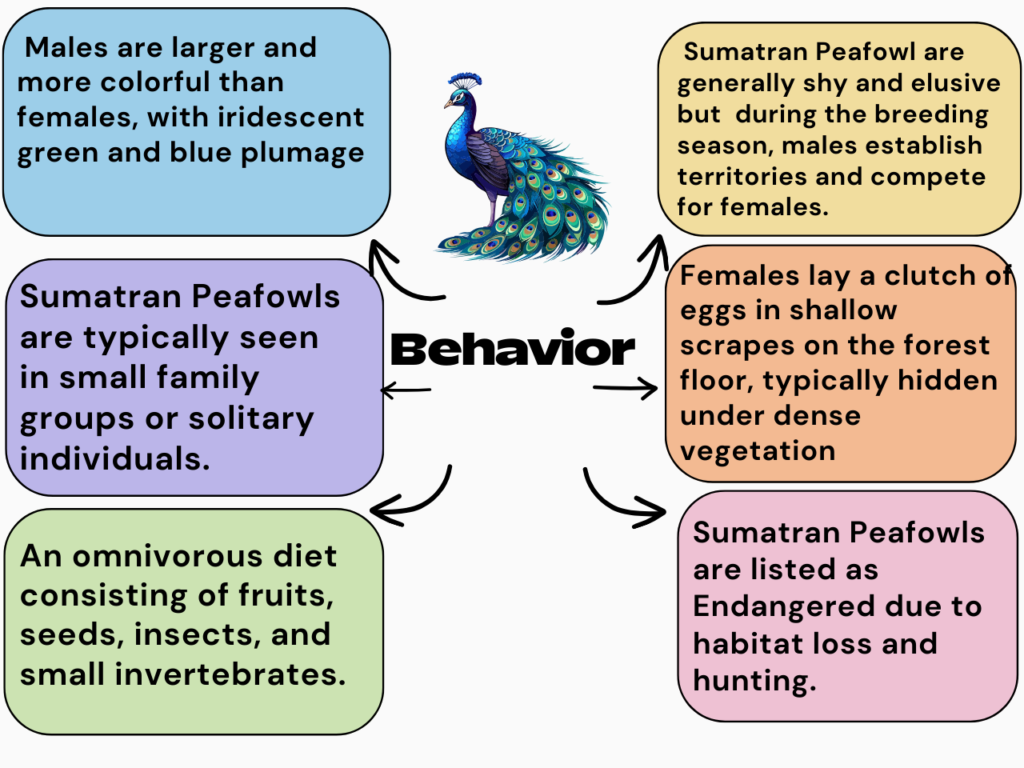
While each species of peacock has unique qualities and a unique geographic distribution, all peacocks have the following characteristics:
Unique Characteristics of Peacocks:
- Feather Displays: The capacity of peacocks to show their feathers in a mesmerizing fan-like pattern is one of their most recognizable traits. The main purposes of this exhibition are courting and luring prospective partners.
- Vibrant Plumage: All peacocks have colorful and brilliant plumage, however, the hues and patterns can differ greatly between species. Typically, the male’s plumage is more elaborate than the female’s.
- Elaborate Courtship Rituals: Peacocks are known for their intricate courtship rituals, which include flapping their feathers in the air, exhibiting them, and using their cries to entice peahens.
- Distinctive Calls: Each species of peacock has its own distinctive calls that are utilized for courtship and communication. Depending on the species, these cries might range from being musical to being aggressive.
Conservation Status and Threats:
Numerous peacock species are threatened by things like habitat destruction, poaching, and illegal trade, despite their cultural and natural importance. To preserve these amazing birds, numerous groups and environmentalists are making unremitting efforts. To ensure their survival, we must acknowledge the significance of protecting their habitats and tackling the myriad dangers they confront.
Conclusion
Peacocks are a wonderful wonder of the avian world with their exquisite plumage and alluring behaviors. Even though the Indian Peacock is the most well-known, the world of peafowl includes a vast variety of species, each with its own distinct appeal, including the Green Peafowl, Congo Peacock, Javan Peafowl, and Sumatran Peafowl.
It is our duty to ensure their conservation and safeguard the beauty they add to our environment as we continue to learn about and value these birds. Remember the amazing variation that exists within this magnificent family of birds the next time you see a peacock.
By understanding and celebrating the many types of peacocks in the world, we can work together to ensure that these magnificent creatures continue to grace our planet with their resplendent beauty for generations to come.
